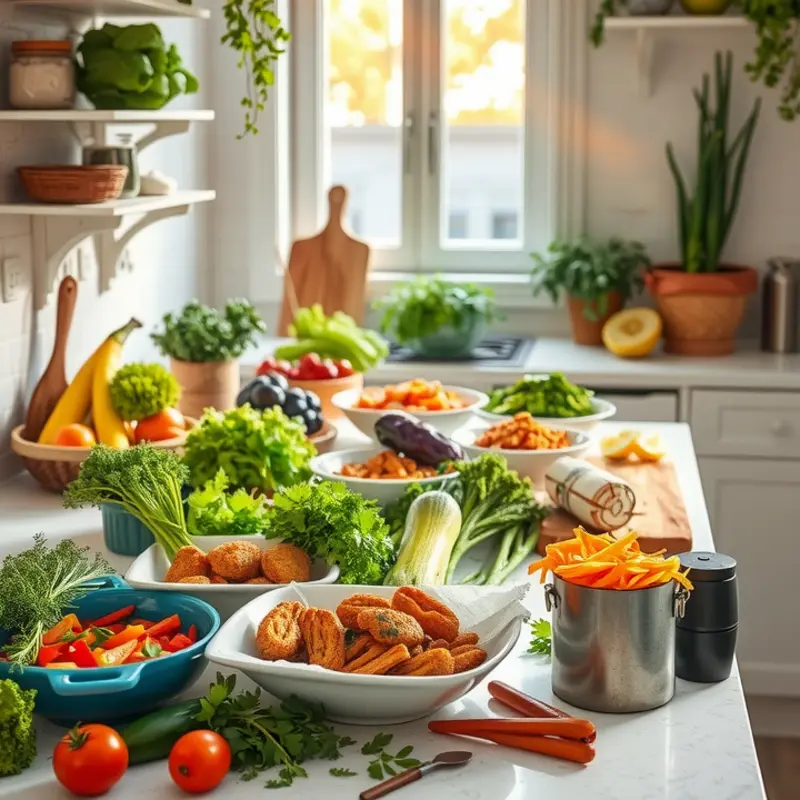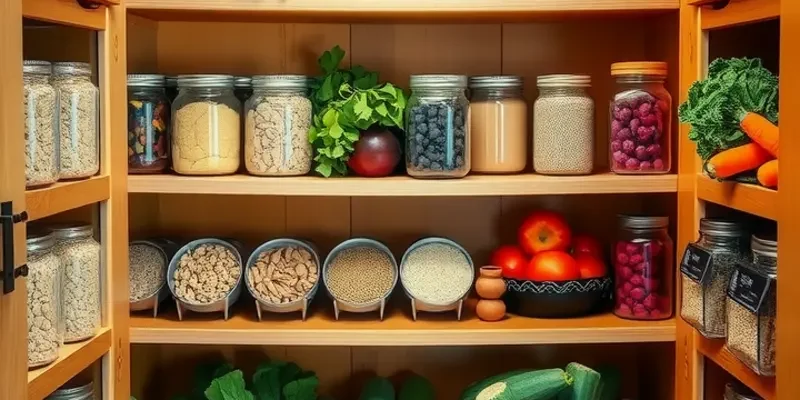As more people seek healthier lifestyles and environmentally friendly choices, vegan cooking stands out as a popular trend. Plant-based diets not only promote wellness but also celebrate culinary creativity. Whether you’re curious about incorporating more veggies into your meals or diving headfirst into a vegan lifestyle, understanding key cooking tips can enhance your experience. This guide aims to demystify vegan cooking and provide practical insights that inspire confidence in your culinary skills.
Stocking Your Vegan Pantry

Building a vegan pantry stocked with essentials is an empowering step toward flavorful and nutritious meals. Understanding which ingredients to have on hand will elevate your plant-based cooking to new heights. Let’s delve into the staples that will become your culinary toolbox.
Grains and Legumes: These are the backbone of many vegan dishes, providing both substance and nutrition. Quinoa, brown rice, and farro lend hearty textures and are rich in protein. Legumes like chickpeas, lentils, and black beans are versatile and can be used in soups, salads, and main dishes. They are excellent sources of fiber and help maintain energy levels throughout the day.
Nuts and Seeds: Packed with healthy fats and protein, nuts and seeds add texture and flavor to vegan dishes. Almonds, walnuts, flaxseeds, and chia seeds can be used in both savory and sweet recipes. They are perfect for making homemade nut milks, adding to granola, or sprinkling on salads. Flaxseeds and chia seeds can also serve as excellent egg substitutes in baking.
Plant-Based Proteins: Ensure you have a variety of plant-based proteins like tofu, tempeh, and edamame. Tofu’s neutral flavor makes it a versatile addition to stir-fries and curries, while tempeh boasts a nutty taste and firm texture that holds up well in marinades and grilling. Seitan, made from wheat gluten, can mimic meat textures, providing another protein-rich option.
Herbs and Spices: The right herbs and spices unlock the full potential of vegan cooking. Basics like garlic, cumin, paprika, and turmeric bring out deep flavors. Fresh herbs like basil, cilantro, and mint add freshness and brightness to dishes. Consider investing in a few lesser-known spices such as za’atar or sumac to explore new flavor profiles like in this burst of freshness.
Healthy Oils and Fats: Avocado oil, coconut oil, and olive oil each have unique properties suitable for different cooking methods. Olive oil is great for sautéing and drizzling, while coconut oil adds a sweet richness to baked goods. Nutritional yeast is another staple that adds a cheesy umami flavor to dishes and can be sprinkled on popcorn or pasta.
Condiments and Essentials: Vegan cooking benefits from a well-rounded collection of condiments. Tamari or soy sauce adds depth, while miso paste infuses dishes with umami. Vinegars like balsamic and apple cider provide acidity to balance flavors. A few slightly unconventional essentials include almond or peanut butter, both of which can enhance sauces and dressings with creamy textures.
Putting together a comprehensive vegan pantry involves thoughtful selection and a bit of experimentation. By integrating these essentials into your cooking routine, you can create meals that celebrate the diversity and vibrancy of plant-based cuisine. Experiment with different combinations, and embrace the creativity that comes with vegan cooking.
Cooking Techniques to Elevate Your Dishes

To master vegan cooking, embracing specific techniques can transform ordinary ingredients into extraordinary dishes. Keys like sautéing, roasting, and flavor layering are invaluable in enhancing flavor while retaining nutrition.
Sautéing is a cornerstone in plant-based cooking. This technique involves cooking ingredients quickly in a bit of oil, intensifying flavors and retaining vitamins. Sautéing garlic, onions, and spices first creates a flavor base for many dishes. This step adds depth, ensuring even simple veggies become savory delights. Use medium heat to avoid burning, and choose oils with high smoke points for better results.
Roasting is another method that elevates the simplest of ingredients. It caramelizes vegetables, bringing out natural sweetness, resulting in rich, complex flavors. Before roasting, toss your vegetables with olive oil, salt, and spices like smoked paprika or a touch of cayenne for an extra kick. Spread them in a single layer for even cooking and golden results.
Vegetables like carrots, Brussels sprouts, and sweet potatoes are perfect candidates for roasting. They develop a unique texture and taste, making them the stars of any meal. For an elevated vegan dish, consider creating a roasted root vegetable medley, mixing seasonal picks for a vibrant display of colors and flavors.
Flavor layering is an art form, crucial in vegan cooking, as it amplifies depth without animal products. Start with fresh herbs and citrus to bring brightness to your dishes. Utilize aromatics, such as lemongrass or ginger, when building soups and stews, infusing them with layers that captivate the palate.
Don’t overlook the power of condiments and dressings in flavor layering. Adding a dollop of tahini or nut butter can transform a simple salad or stir-fry. Acidic elements like vinegar or lemon juice balance flavors, emphasizing each ingredient’s natural taste.
Big flavors often come from global cuisines, so don’t shy away from experimenting. Incorporate spices like cumin, turmeric, and coriander for a Middle Eastern flair. Use fermented products like kimchi or miso to add umami and complexity. If you’re intrigued by umami-rich dishes, this Mediterranean chickpea salad offers a perfect exploration of vibrant tastes and textures.
Using these techniques collectively can take your plant-based dishes from simple to sensational. They ensure meals that are not just nutritious but a feast for all senses. Explore these methods to unlock new dimensions in vegan cuisine, making every meal a celebration of flavors.
Final words
Understanding vegan cooking starts with familiarizing yourself with key ingredients and techniques. Building a well-stocked pantry sets a solid foundation for creativity in every meal. Exploring different cooking methods, like sautéing and roasting, further enhances the flavors and textures of plant-based dishes. As you experiment with meals, remember that the goal is to enjoy and celebrate the vibrant possibilities that vegan cuisine offers. Your journey into vegan cooking can be both delicious and fulfilling, contributing positively to your health and the environment.








